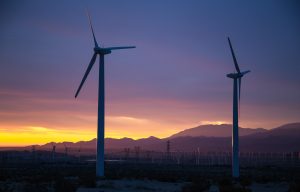When EPA Is Under Threat, So Is Business: Two Key Examples
By EDF Blogs
(This post first appeared on EDF+Business. It was written by EDF’s Liz Delaney)

American businesses benefit tremendously from the robust voluntary and regulatory programs of the U.S. Environmental Protection Agency. These programs are now under threat of massive budget cuts and regulatory rollbacks. In the coming weeks and months, the experts at EDF+Business will examine what a weakened EPA means for business.
While some politicians may question the reality of climate change, most CEOs do not. So it’s no surprise that while Congress has been stuck, business has been busy addressing the problem. Luckily, they’ve had a helpful partner by their side: the U.S. Environmental Protection Agency (EPA).
Contrary to now head of the EPA Scott Pruitt’s claim that business has been subjected to “regulatory uncertainty”—stated during this year’s Conservative Political Action Conference—the Agency has administered a number of voluntary and regulatory programs that help corporations respond to the challenge of climate change. For companies, future planning is simply good business. This is why many in Corporate America—having long accepted that climate change is real— are continuing to transition towards low-carbon energy options and work with the EPA to move forward in a sensible, cost-effective manner.
But with the recent announcement on Pruitt’s plans to cut the EPA’s budget by a reported 24 percent—roughly $6 billion, its lowest since the mid-1980’s–it may be up to the business community to defend the instrumental role of the Agency in helping business thrive while protecting the environment.
Here’s a look at just two of the many EPA programs that have helped business transition to a clean energy future.
Forging a smart economic future with the Clean Power Plan
Many in the business community strongly supported the EPA’s Clean Power Plan (CPP)—the first-ever national limits on carbon pollution from power plants. The argument? Dirty sources of energy generation are becoming a growing concern for corporate America. These energy sources are increasingly uneconomic. Fortune 500 companies routinely set renewable energy and emissions reduction goals, but find roadblocks in many energy markets around the country.
Fortunately, the CPP can open new opportunities for businesses interested in operating in a clean energy economy. The rule’s flexible framework puts states in the driver’s seat to set plans that call for the most appropriate and cost-effective solutions for meeting pollution reduction targets while spurring innovation. If you ask me, this satisfies Pruitt’s call to “restore federalism” by giving states more of a say in regulations. The plans provide clarity on the energy options available to businesses in different regions, helping to inform their long-term carbon reduction strategies and eventually increase access to cost-effective low-carbon energy.
This explains why last year major innovators including Mars, IKEA, Apple, Google, and Microsoft filed legal briefs in federal court supporting the EPA’s Plan. And more recently, leading executives from over 760 companies and investors—many of them Fortune 500 firms—called upon the new Administration to move ahead with policies to address climate change, like the Clean Power Plan.
The CPP is positioned to:
- Generate $155 billion in consumer savings between 2020-2030
- Create 3x as many jobs per $1 invested in clean energy as compared to $1 invested in fossil fuels
- Lead to climate and health benefits worth an estimated $54 billion, including avoiding 3,600 premature deaths in 2030
The Green Power Partnership
The Green Power Partnership is a voluntary program launched by the EPA to increase the use of renewable electricity in the U.S. Under the program, businesses are armed with resources and provided technical support to identify the types of green power products that best meet their goals. Since its inception, the Partnership has made notable progress in addressing market barriers to green power procurement.
Through the Partnership, companies can reduce their carbon footprints, increase cost savings, and demonstrate civic leadership, which further drives customer, investor and stakeholder loyalty. Take Colgate-Palmolive for example: as one of the Green Power Partnership’s national top 100, the consumer products giant has generated close to 2 billion kWh of annual green power through wind power alone. This represents 80% of the company’s total electricity use.
Today, hundreds of Partner organizations rely on billions of kWh of green power annually. At the end of 2015, over 1,300 Partners were collectively using more than 30 billion kilowatt-hours (kWh) of green power annually, equivalent to the electricity use of more than three million average American homes.
Pruitt has ratified the belief that we can “grow jobs, grow the economy while being good stewards of the environment”–and he’s right. The renewable energy industry is now outpacing the rest of the U.S. in job creation; which is good news for business and the economy at large. American wind power now supports more than 100,000 jobs—an increase of 32% in just one year—and solar employs more people in U.S. electricity generation than oil, coal and gas combined.
Long-term economics versus short-term politics
We don’t know what will happen in Washington over the next few years. But many businesses are moving forward. Rather than shift course, corporations are increasing investments in clean, reliable power, a move that is consistent with sound business practices.
But business can’t do it alone. The EPA supports responsible companies who have committed to reducing their carbon footprints while safeguarding our planet. It’s time for business to not just leverage their scale and buying power to help accelerate the transition to a clean energy future, but to speak up in favor of maintaining a well-funded agency that continues to make decisions based on sound science and the law.
In his first address to the EPA, Scott Pruitt said, “you can’t lead unless you listen.” Let’s make sure he hears from the businesses that are focused on a future where both the economy and the environment can thrive.


 Barely a month after his inauguration, President Trump is proceeding with plans to dismantle protections under the Clean Air Act and Clean Water Act. The targets include
Barely a month after his inauguration, President Trump is proceeding with plans to dismantle protections under the Clean Air Act and Clean Water Act. The targets include 



 “If you want to know how wind works for America, just ask a Texan.” That’s
“If you want to know how wind works for America, just ask a Texan.” That’s